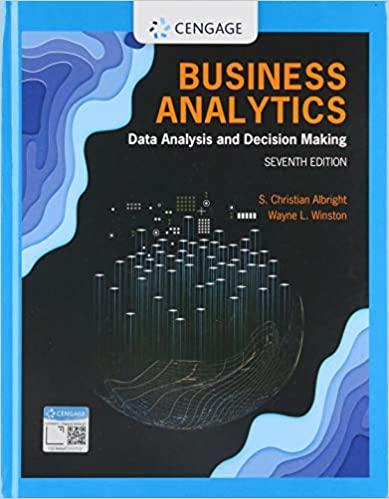Question
TOPIC :Learning a job or skill in a course versus hands-on or experiential learning APA STYLE 1,800- to 2,000-word essay You'll need six reputable secondary
TOPIC
:Learning a job or skill in a course versus hands-on or experiential learning
APA STYLE
1,800- to 2,000-word essay
You'll need six reputable secondary sources for your comparison and contrast prewriting
FOLLOW THE REQUIREMENTS PLEASE
Your project must be submitted as a Word document (.docx, .doc)*. Your project will be individually graded by your instructor and therefore will take up to a few weeks to grade.
Be sure that each of your files contains the following information:
- Your name
- Your student ID number
- The exam number
- Your email address
To submit your graded project, follow these steps:
- Use the link on the next page to open the Project Upload page.
- Find the exam number for your project at the top of the Project Upload page.
- Follow the instructions provided to complete your exam.
Be sure to keep a backup copy of any files you submit to the school!
Comparison and Contrast Prewriting
Comparison and contrast involve analyzing similarities (comparison), differences (contrast), or both. You use comparison and contrast every day, for instance, when you're trying to decide which washer and dryer to buy, or whether to drive or take public transportation to work.
Assignment
For this prewriting assignment, you'll prepare a graphic organizer or outline for a 1,800- to 2,000-word essay using the comparison and contrast pattern of development. You'll choose one of the assigned topics below and begin your research. Four to six secondary sources are required. You are required to use the APA citation and documentation format for parenthetical (in-text) citations and your list of references.
Review Comparison and Contrast, Chapter 15 in your textbook, and complete exercises 15.1 and 15.2. These exercises will help you identify the basis of comparison and to draft a thesis statement. Then refer to Graphic Organizers 15.1 and 15.2 to see the structure of comparison and contrast essays that use point-by-point and subject-by-subject methods of organization. You'll choose one of these methods to organize your topic.
You do not need to use text boxes or create flowcharts for your exam. Refer to the sample graphic organizer included in these exam instructions and type your work in a word-processed document.
Topic
- Learning a job or skill in a course versus hands-on or experiential learning
Research
You'll need six reputable secondary sources for your comparison and contrast prewriting. Refer to the essay "Pockets" by Jan Diehm and Amber Thomas to observe how they use secondary sources to support their thesis.
Review Chapter 22, "Finding Sources, Taking Notes, and Synthesizing Ideas." Evaluate your sources to ensure that the information you're using and passing on to your readers is accurate and reliable.
Incorporate evidence from your secondary sources into your outline or graphic organizer to plan your essay. You'll need to use parenthetical citations and include a list of references on the last page of your exam. Refer to the APA style section in your text and the APA Style Guide in The Writer's Block.
Process
Follow stepsone to fivein the guided writing assignment in Chapter 15. These steps will help you to develop, plan, and organize your ideas.
Avoid using text boxes, arrows, lines, or flowcharts for your graphic organizer. Instead, use a basic informal outline for your ideas, like the one you prepared for your illustration essay.
You can see the structure of Jean Eshelman's "How to Be 'Somebody': Hollywood's On the Waterfront versus Bollywood's Ghulam" in Graphic Organizer 15.3 of your textbook, but you'll need to write a more in-depth outline or graphic organizer to create a strong foundation for your 1,800- to 2,000-word essay. Incorporate information from your secondary sources where it will support your characteristics, and use APA format to include the sources in a parenthetical citation and on your references list.
Exam Format
Format your prewriting and essay exams according to the following instructions. Refer to the sample APA-style essay in your text.
- Start with a title page that includes your
- Title
- Name
- Student ID
- Address
- Email address
- Use the header function to insert your page number in the top right margin of your document.
- You do not need to include your essay title in the header.
- Begin your document on page 2 after the title page.
- Start page 2 with your title
- Do not include abstracts in your essays.
- Use transitional words, phrases, and sentences to guide your reader through your essay.
- Do not use headings in your essay.
- Start page 2 with your title
- Include your references list on the last page of your document.
- Do not submit it separately.
Grading Rubric
| Advanced-score of 100% | The prewriting effectively addresses the purpose of the assignment and the requirements of the prompt.
|
| Proficient-score of 85% | The prewriting adequately addresses the purpose of the assignment and the requirements of the prompt.
|
| Developing-score of 70% | The prewriting partially addresses the purpose of the assignment and the requirements of the prompt.
|
| Emerging-score of 60% | The prewriting minimally addresses the purpose of the assignment and the requirements of the prompt.
|
| Not Developed-score of 50% | The prewriting does not address the purpose of the assignment and the requirements of the prompt.
|
Step by Step Solution
There are 3 Steps involved in it
Step: 1

Get Instant Access to Expert-Tailored Solutions
See step-by-step solutions with expert insights and AI powered tools for academic success
Step: 2

Step: 3

Ace Your Homework with AI
Get the answers you need in no time with our AI-driven, step-by-step assistance
Get Started


